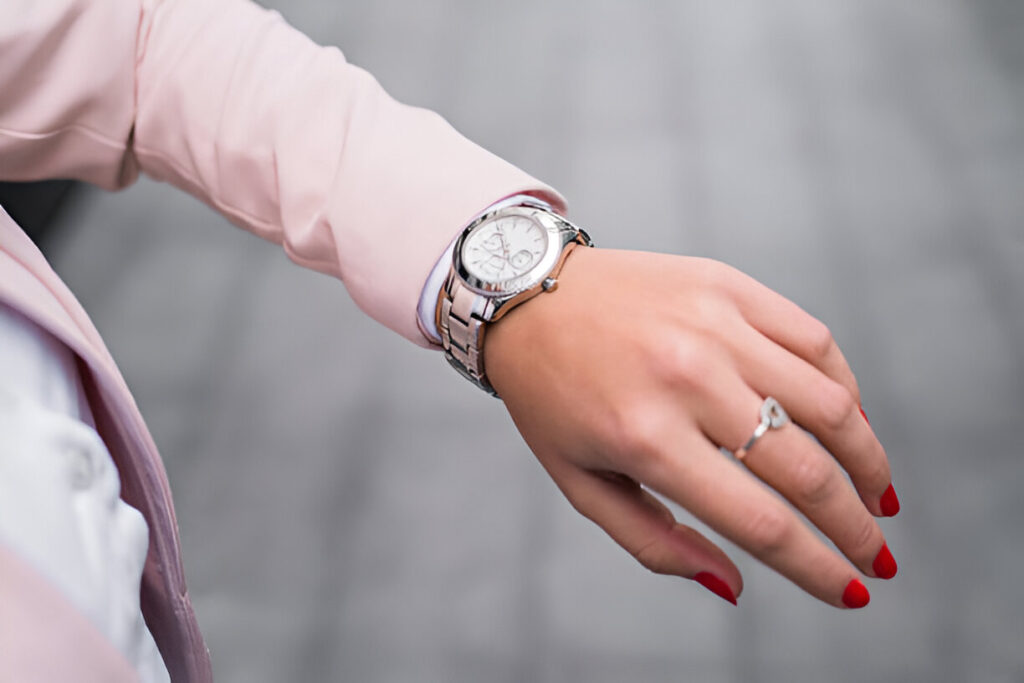Watch shopping can be overwhelming when you’re trying to balance style with actual functionality. Women’s watches today offer an incredible range of options, from ultra-minimalist designs to feature-packed smartwatches, but the key is finding something that fits your lifestyle without compromising on the aesthetic you want. Industry data shows that women keep their watches an average of 8-12 years, compared to 5-7 years for men, which means your choice needs to work long-term both stylistically and mechanically.
Contents
Reliability Factors That Actually Matter
Water resistance is probably the most practical feature to consider, even if you’re not planning to go swimming. Daily activities like washing dishes, getting caught in rain, or accidentally splashing water can damage a watch that’s not properly sealed. Look for at least 30 meters (3 ATM) of water resistance for basic protection.
The 50-meter rating is better for active lifestyles, while 100 meters gives you confidence for swimming and water sports. Anything above 200 meters is usually overkill unless you’re seriously into diving or water activities.
Movement reliability varies dramatically between brands and price points. Swiss movements from companies like ETA, Sellita, or in-house calibers from established brands typically offer better long-term reliability than generic movements. Japanese movements from Citizen or Seiko are also excellent and often more affordable than Swiss alternatives.
Case construction affects durability more than most people realize. Solid case construction, where the case back is screwed or pressed firmly into place, protects the movement better than snap-on backs. Sapphire crystal is worth the extra cost because it’s nearly scratchproof, while mineral crystal can show wear pretty quickly with daily use.
Style Versatility Without Compromise
The most stylish choice is often a watch that can transition between different settings without looking out of place. A classic round case in 32-36mm diameter works for most occasions – small enough for formal wear but substantial enough to make a statement with casual outfits.
Dial colors play a huge role in versatility. White or cream dials reflect light beautifully and work with almost any outfit color. Black dials look more dramatic and hide wear better, while navy or dark green offer sophistication with more personality than basic black.
Roman numerals or simple hour markers tend to age better than trendy dial designs. What looks cutting-edge today might feel dated in five years. Clean, classic designs have staying power that justifies the investment in a quality timepiece.
Case shape affects how formal or casual a watch appears. Round cases are the most traditional and versatile. Square or rectangular cases look more modern and architectural but don’t work as well with flowing, feminine clothing styles. Tonneau (barrel-shaped) cases offer a nice middle ground between round and square.
Brand Reputation and Service Networks
Some brands have significantly better service networks than others, which matters when your watch needs maintenance or repair. Omega, TAG Heuer, and Tissot have authorized service centers in most major cities, while smaller brands might require shipping to specialized repair facilities.
Service costs vary dramatically between brands. A basic service on a Rolex might cost $700-$1,000, while the same level of service on a Seiko or Citizen watch costs $150-$300. Factor these ongoing costs into your purchase decision, especially for mechanical watches that need service every 3-5 years.
Brand heritage affects resale value significantly. Established names like Cartier, Rolex, or Omega hold their value much better than newer or fashion-focused brands. Even if you’re not planning to sell, this matters for insurance purposes and overall ownership satisfaction.
Technical Features Worth Considering
Date displays are incredibly useful for daily wear, but they need to be readable without being distracting. Large date windows or date subdials work better than tiny date apertures that require squinting. Some watches use colored date wheels that complement the dial design instead of the standard white background.
Multiple time zones become valuable if you travel frequently or work with international clients. GMT functions or world time displays add complexity but provide real utility for busy professionals.
Power reserve indicators on automatic watches help you know when to wind or wear the watch to keep it running. This is especially useful if you rotate between multiple watches and don’t want to reset the time constantly.
Luminous markers or hands improve functionality in low light conditions. Swiss Super-LumiNova provides the best brightness and longevity, staying visible for hours after light exposure. Cheaper luminous materials fade quickly and don’t provide much practical benefit.
Investment Potential and Long-Term Value
Certain women’s watch models have proven track records as investments. Vintage Cartier Tanks, Rolex Datejusts, and Omega Constellations often appreciate in value, especially if they’re kept in excellent condition with original boxes and papers.
Limited edition pieces from established brands tend to hold value better than regular production models, but only if the limitation is meaningful. A watch limited to 500 pieces has more potential than one limited to 5,000 pieces.
Market trends show that smaller, elegant watches are becoming more desirable as people move away from oversized statement pieces. This suggests that classic proportions will continue to hold their appeal and value over time.
Condition affects value exponentially. A watch in excellent condition might be worth 80% of retail value, while one with scratches and wear might only retain 40-50% of its original price. Proper care and regular service protect your investment significantly.




